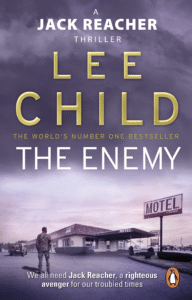The Elusive Muse and the Tangled Up Truth: An Exploration of Bob Dylan’s “Chronicles: Volume One”

Bob Dylan, an artist whose very name has become synonymous with musical and lyrical innovation, offered a rare glimpse into his formative years and early career with the publication of “Chronicles: Volume One” in 2004. Far from a straightforward autobiography, this memoir is a fragmented, impressionistic journey through specific periods of Dylan’s life, defying chronological order and embracing the enigmatic persona he has cultivated for decades. Through vivid anecdotes, introspective musings, and a prose style as unique as his songwriting, Dylan crafts a compelling narrative that illuminates the forces shaping his artistic evolution, while simultaneously reinforcing the inherent mystery surrounding his creative genius.
Defying Linearity: A Journey Through Select Moments
One of the most striking aspects of “Chronicles” is its deliberate non-linearity. Dylan consciously chooses to focus on seemingly disparate periods: his arrival in Greenwich Village, the recording of “New Morning” and “Blood on the Tracks,” and his early days in Minneapolis. This unconventional structure mirrors the way memory often functions, leaping across time and settling on moments that hold particular significance. By eschewing a traditional chronological account, Dylan invites the reader to piece together his early trajectory through a series of carefully selected vignettes, emphasizing the emotional and artistic resonance of these specific junctures rather than a simple recitation of events.
The Fertile Ground of Greenwich Village
The book offers a fascinating portrayal of the fertile artistic landscape of Greenwich Village in the early 1960s. Dylan paints a vivid picture of the coffee houses, the folk music scene, and the eclectic cast of characters that populated this bohemian enclave. He recounts his encounters with legendary figures like Woody Guthrie, whose influence on his early songwriting is palpable, and his immersion in the world of traditional folk music. However, Dylan’s perspective is far from romanticized nostalgia. He portrays the scene with a critical eye, acknowledging the egos and the inherent limitations of strict adherence to tradition, hinting at his own burgeoning desire to break free and forge his own path.
Unveiling the Creative Alchemy
“Chronicles” also provides intriguing insights into Dylan’s creative process. His detailed accounts of the recording sessions for albums like “New Morning” and, particularly, the emotionally raw “Blood on the Tracks,” offer a rare window into the often-turbulent journey from inspiration to finished product. He describes the atmosphere in the studio, the interplay with musicians, and the sometimes-serendipitous nature of artistic creation. His reflections on the genesis of songs, though often veiled in a characteristic Dylan-esque ambiguity, reveal a deep engagement with language, melody, and the power of storytelling. These sections are particularly captivating for fans seeking to understand the alchemy behind his iconic music.
Glimpses into the Inner World of an Artist
Beyond the specific events and artistic endeavors, “Chronicles” offers a glimpse into Dylan’s inner world. He reveals his relentless curiosity, his voracious appetite for reading, and his constant search for inspiration in unexpected places. He speaks of his fascination with history, literature, and the nuances of human experience, underscoring the intellectual and emotional depth that underpins his songwriting. Yet, true to form, Dylan maintains a certain level of elusiveness. He offers glimpses but never fully unveils the man behind the myth, preserving the mystique that has always surrounded him. This careful curation of his narrative reinforces the idea that the art is often more revealing than a straightforward biographical account.
A Legacy of Ambiguity and Artistic Integrity
In conclusion, “Chronicles: Volume One” is not the definitive Bob Dylan autobiography that some might have expected. Instead, it is a richly textured and deeply personal exploration of selected moments that shaped his artistic identity. Through its non-linear structure, vivid portrayals of formative environments, and insightful reflections on the creative process, the book offers a compelling, albeit fragmented, understanding of one of the most influential artists of the 20th century. Like his music, “Chronicles” is layered with nuance, ambiguity, and a profound sense of artistic integrity, leaving the reader with a deeper appreciation for the tangled up truth that lies at the heart of Bob Dylan’s enduring legacy.




















